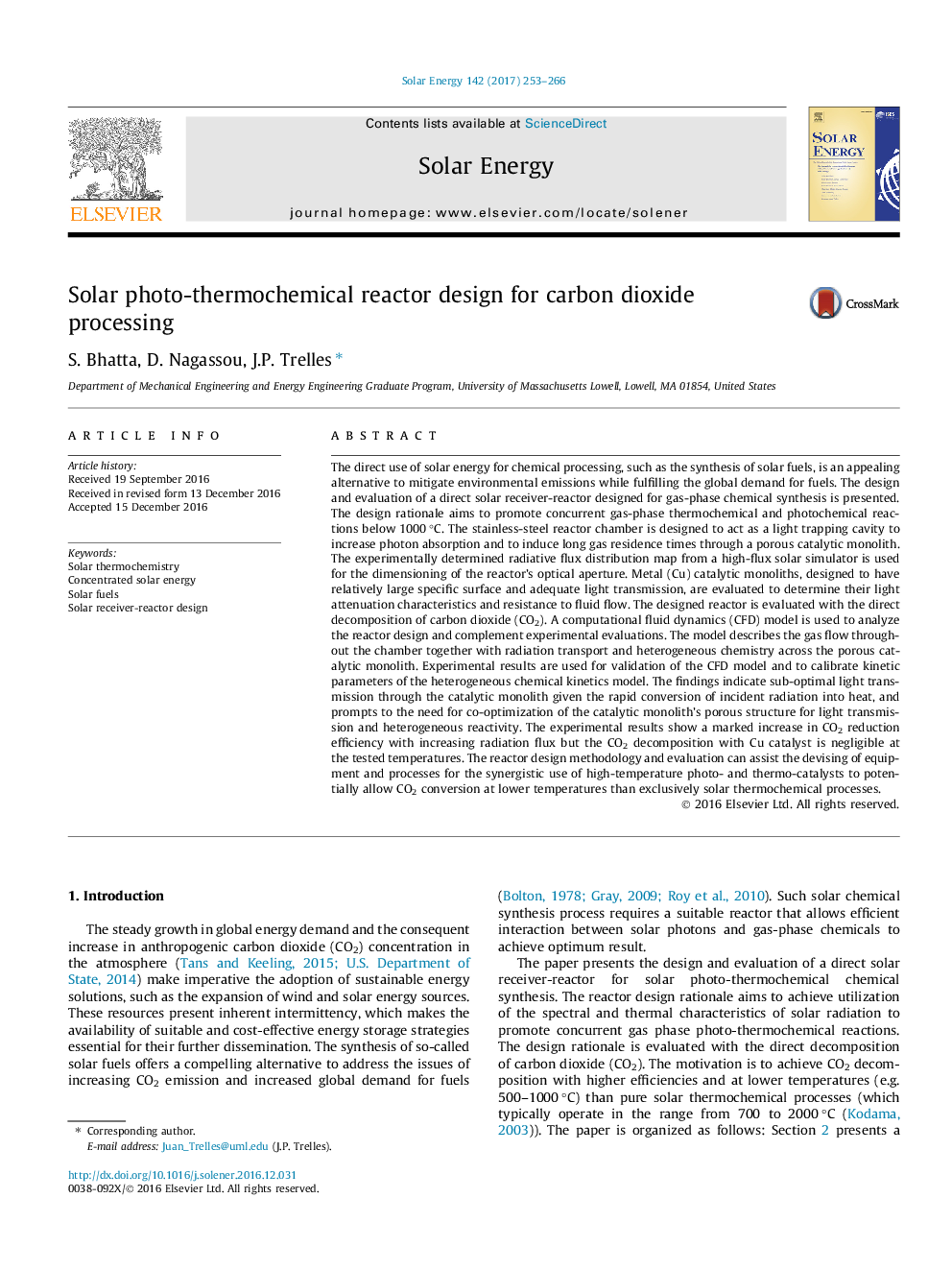| کد مقاله | کد نشریه | سال انتشار | مقاله انگلیسی | نسخه تمام متن |
|---|---|---|---|---|
| 5451258 | 1513076 | 2017 | 14 صفحه PDF | دانلود رایگان |
عنوان انگلیسی مقاله ISI
Solar photo-thermochemical reactor design for carbon dioxide processing
ترجمه فارسی عنوان
طراحی رآکتور عکس-ترمو-شیمیایی خورشیدی برای پردازش دی اکسید کربن
دانلود مقاله + سفارش ترجمه
دانلود مقاله ISI انگلیسی
رایگان برای ایرانیان
کلمات کلیدی
ترموشیمی خورشیدی، انرژی خورشیدی غنی شده، سوخت های خورشیدی، طراحی راکتور گیرنده خورشیدی،
موضوعات مرتبط
مهندسی و علوم پایه
مهندسی انرژی
انرژی های تجدید پذیر، توسعه پایدار و محیط زیست
چکیده انگلیسی
The direct use of solar energy for chemical processing, such as the synthesis of solar fuels, is an appealing alternative to mitigate environmental emissions while fulfilling the global demand for fuels. The design and evaluation of a direct solar receiver-reactor designed for gas-phase chemical synthesis is presented. The design rationale aims to promote concurrent gas-phase thermochemical and photochemical reactions below 1000 °C. The stainless-steel reactor chamber is designed to act as a light trapping cavity to increase photon absorption and to induce long gas residence times through a porous catalytic monolith. The experimentally determined radiative flux distribution map from a high-flux solar simulator is used for the dimensioning of the reactor's optical aperture. Metal (Cu) catalytic monoliths, designed to have relatively large specific surface and adequate light transmission, are evaluated to determine their light attenuation characteristics and resistance to fluid flow. The designed reactor is evaluated with the direct decomposition of carbon dioxide (CO2). A computational fluid dynamics (CFD) model is used to analyze the reactor design and complement experimental evaluations. The model describes the gas flow throughout the chamber together with radiation transport and heterogeneous chemistry across the porous catalytic monolith. Experimental results are used for validation of the CFD model and to calibrate kinetic parameters of the heterogeneous chemical kinetics model. The findings indicate sub-optimal light transmission through the catalytic monolith given the rapid conversion of incident radiation into heat, and prompts to the need for co-optimization of the catalytic monolith's porous structure for light transmission and heterogeneous reactivity. The experimental results show a marked increase in CO2 reduction efficiency with increasing radiation flux but the CO2 decomposition with Cu catalyst is negligible at the tested temperatures. The reactor design methodology and evaluation can assist the devising of equipment and processes for the synergistic use of high-temperature photo- and thermo-catalysts to potentially allow CO2 conversion at lower temperatures than exclusively solar thermochemical processes.
ناشر
Database: Elsevier - ScienceDirect (ساینس دایرکت)
Journal: Solar Energy - Volume 142, 15 January 2017, Pages 253-266
Journal: Solar Energy - Volume 142, 15 January 2017, Pages 253-266
نویسندگان
S. Bhatta, D. Nagassou, J.P. Trelles,
